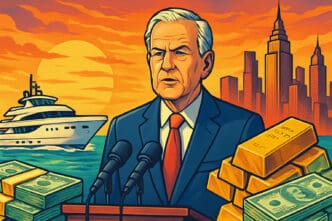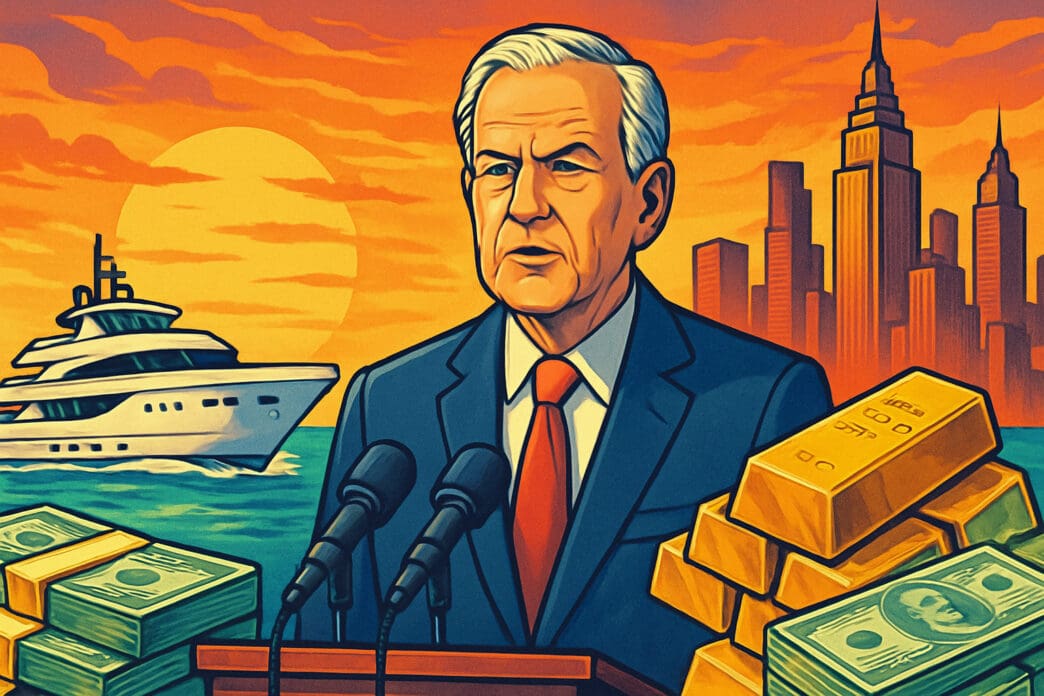Bernard Arnault, the French billionaire chairman and CEO of LVMH Moët Hennessy Louis Vuitton, has solidified his status as the world’s preeminent purveyor of luxury by mastering a unique business strategy over the past four decades. From his headquarters in Paris, Arnault has meticulously assembled a global empire of 75 distinguished brands, or Maisons, by acquiring companies with deep cultural heritage, injecting them with creative genius and commercial discipline, and relentlessly focusing on long-term desirability over short-term profits. This playbook, which transformed dormant assets like Christian Dior and Tiffany & Co. into global powerhouses, is not just a story of wealth accumulation but a masterclass in brand building and patient capitalism that has fundamentally reshaped the business of desire.
The Architect of Modern Luxury
To understand Bernard Arnault is to understand the very structure of the modern luxury market, a landscape he largely designed. His conglomerate, LVMH, is a sprawling yet carefully curated collection of the world’s most iconic names in fashion, leather goods, jewelry, wine, and spirits. Brands like Louis Vuitton, Christian Dior, Fendi, Tiffany & Co., Dom Pérignon, and Sephora all fall under his strategic command.
The sheer scale is staggering. LVMH operates thousands of stores worldwide and employs hundreds of thousands of people, making it a dominant economic force in Europe and a cultural trendsetter across the globe. Yet, Arnault’s influence extends far beyond mere revenue figures; he has successfully argued, through action, that luxury is an industry that thrives on heritage, creativity, and an almost paradoxical blend of artistic freedom and rigorous financial control.
From Real Estate to Runway: The Making of a Titan
Arnault’s journey did not begin in the gilded salons of Parisian couture. He started his career in his family’s civil engineering firm, Ferret-Savinel, after graduating from the prestigious École Polytechnique. It was a trip to the United States in the early 1980s that reportedly sparked his vision. When he asked a New York taxi driver what he knew of France, the driver didn’t mention the president, but he knew Christian Dior.
This insight into the global power of a luxury brand name stuck with him. In 1984, he seized an opportunity to acquire a bankrupt textile group, Boussac Saint-Frères, primarily because it owned one struggling but legendary asset: the Christian Dior fashion house. Arnault used a combination of his family’s money and leveraged financing to take control. He then systematically sold off most of Boussac’s other assets, focusing all his energy on reviving the Dior brand. This single, audacious move became the cornerstone of his future empire.
His methods were aggressive and earned him the moniker “The Wolf in Cashmere.” He applied a ruthless efficiency learned in engineering and real estate to the often-sentimental world of fashion, proving that financial acumen was just as critical as a designer’s creative vision.
The LVMH Playbook: A Masterclass in Corporate Strategy
The creation of the LVMH group itself was a product of Arnault’s tactical brilliance. In the late 1980s, he engineered a takeover of the recently merged Louis Vuitton and Moët Hennessy. He exploited a rift between the company’s existing leadership, first aligning with one faction before ultimately emerging with a controlling stake for himself. It was a hostile and complex battle that cemented his reputation as a formidable corporate raider.
Once in control, he didn’t simply consolidate operations. Instead, he pioneered a new type of conglomerate model specifically for luxury. He understood that brands like Louis Vuitton and Dior needed to feel like rivals, not siblings, to maintain their unique identities and drive innovation. This internal competition, managed under a unified corporate umbrella, became a key pillar of his success.
The Four Pillars of Arnault’s Genius
Analyzing Arnault’s four-decade reign reveals a consistent strategic framework. These pillars explain how he has repeatedly turned heritage into spectacular financial success, offering valuable lessons for any business leader or investor.
Pillar 1: Acquiring “Sleeping Beauties”
Arnault’s primary acquisition strategy is to identify and purchase “sleeping beauties”—brands with a rich history and strong name recognition that have become poorly managed or have lost their cultural relevance. He sees the latent value in their heritage, which cannot be manufactured overnight.
The 2021 acquisition of American jeweler Tiffany & Co. is a perfect example. While still a powerful brand, Tiffany had seen its image diluted and was struggling to connect with younger consumers. Arnault saw the immense potential locked within its iconic blue box and 180-year history. LVMH quickly moved to overhaul its marketing, elevate its product lines, and reposition it at the highest end of the luxury market, a classic execution of the Arnault playbook.
Pillar 2: The Cult of Desirability
Arnault understands that luxury is not about selling products; it is about selling a dream. The core of his strategy is to cultivate desirability. This is achieved by creating an aura of exclusivity, timelessness, and superior quality. LVMH products are intentionally expensive, not just to cover the cost of craftsmanship, but as a signal of their value. The group rarely, if ever, holds sales, as discounting would erode the brand’s perceived worth.
A key part of this is entrusting brands to visionary creative directors. Arnault has a famed ability to spot and nurture talent, giving designers like John Galliano (at Dior), Marc Jacobs (at Louis Vuitton), and Phoebe Philo (at Celine) the freedom to create. He provides them with enormous resources but expects them to generate cultural buzz and, ultimately, commercial success. It is a high-stakes marriage of art and commerce.
Pillar 3: Decentralized Autonomy with Centralized Oversight
While many conglomerates seek to create synergies by merging back-office functions, Arnault employs a more nuanced approach. The individual Maisons within LVMH operate with a remarkable degree of autonomy. The CEO of Fendi and the CEO of Bulgari are encouraged to compete and maintain their brand’s unique culture and creative direction.
However, this freedom is balanced with powerful centralized oversight. LVMH leverages its immense scale to negotiate prime real estate locations, secure bulk media buys, and recruit top-tier executive talent for all its brands. This structure provides the best of both worlds: the agility and unique identity of a small boutique backed by the financial and logistical might of a global giant.
Pillar 4: Patient Capital and Long-Term Vision
Perhaps the most critical element of Arnault’s genius is his long-term perspective. He has famously stated, “I am not interested in the quarterly results.” He invests in brands with the intention of holding and growing them for decades, not years. This “patient capital” allows him to make decisions—such as spending hundreds of millions to renovate a flagship store or investing in a new generation of winemakers—that would be difficult for a typical public company focused on pleasing Wall Street every 90 days.
This long-term view is institutionalized through his family’s control over the company. Arnault has placed all five of his children in key leadership roles across the LVMH empire, from running major brands like Dior and Tiffany & Co. to overseeing strategy. This dynastic approach ensures that his vision of building brands for the next century, not the next quarter, will endure.
Lessons for the Modern Investor and Entrepreneur
While few can operate on Arnault’s scale, the principles behind his success offer profound guidance. For entrepreneurs, his story underscores the power of building a strong, authentic brand identity and never compromising on quality. It is a reminder that a powerful story and heritage can be a company’s most valuable asset.
For investors, the Arnault model champions the virtue of long-term thinking. It’s a powerful counter-narrative to the high-frequency trading and short-term speculation that dominate modern markets. His success proves that identifying high-quality assets with durable competitive advantages and holding them for the long run remains one of the most effective paths to wealth creation.
The core lesson is to focus on creating and owning timeless value. Whether it’s a handbag, a bottle of champagne, or a stock in your portfolio, the goal should be to invest in things that grow more desirable, not less, with the passage of time.
In conclusion, Bernard Arnault’s business genius lies not in a single innovation but in the masterful synthesis of seemingly contradictory forces. He is both a ruthless financier and a passionate patron of the arts; a believer in creative chaos and a stickler for financial discipline; a corporate titan who cultivates the feel of a small family atelier. By acquiring history and selling the future, he has built an empire that defines modern luxury and offers an enduring lesson on the power of playing the long game.








